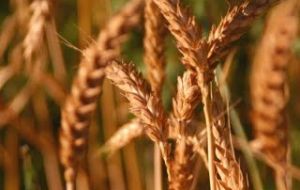MercoPress. South Atlantic News Agency
Chilean wheat farmers squeezed by falling prices and rising costs
 Farmers are going for other crops or selling their land to government
Farmers are going for other crops or selling their land to government Just two years after wheat prices registered record highs, Chilean producers are finding themselves squeezed between rising costs and cheap imports.
Many farmers have turned to other crops, reducing the acres of wheat planted in the country by a third since the peak in 2007, while many local producers still growing wheat find themselves unable to compete on financing with foreign producers who offer local mills up to 120 days to pay off their debts.
The surfeit of affordable foreign wheat has left some farmers unable to sell their grain stores in Regions IX and X, which make up about half of the country's production.
Thirty percent of the previous harvest remains unsold in the economically troubled Region IX, known as the Araucanía.
Gastón Caminondo, President of the Society for Agricultural Development (SOFO) in the Araucanía, said that wheat farmers are now paying the price for the spike in wheat values. Prices dropped within months of their historic 2007 highs, but not without driving up the production costs for inputs like fertilizer.
Saddled with rising costs in the next harvest, farmers suffered serious losses and have shifted to other crops. Caminondo also suggested that many producers have instead sold their land off to a government program buying and returning ancestral lands to indigenous communities in the Araucanía, reducing wheat acreage in the region.
Among the regional rescue measures announced by Chilean cabinet officials in the Araucanía last week was nearly 1 million US dollars in direct subsidies to indigenous wheat farmers.
By Brad Haynes - Santiago Times




Top Comments
Disclaimer & comment rulesCommenting for this story is now closed.
If you have a Facebook account, become a fan and comment on our Facebook Page!